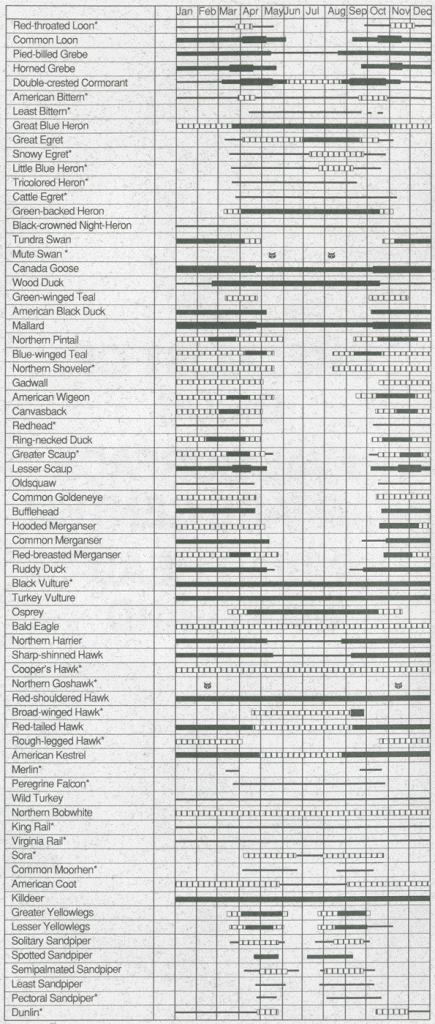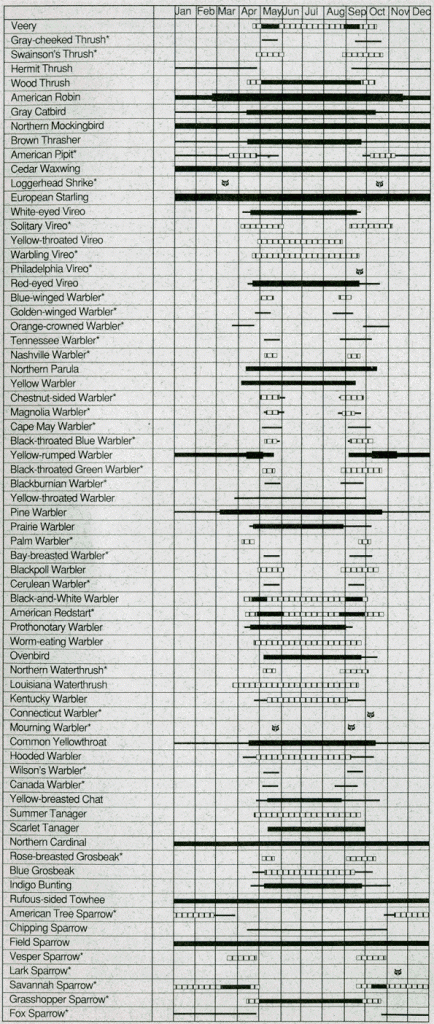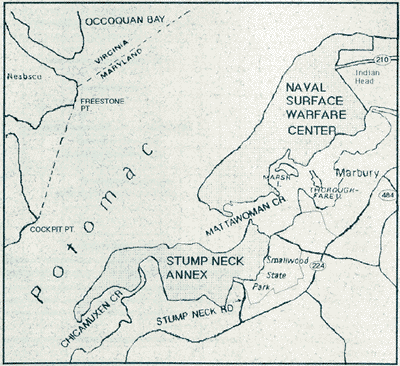 CHECKLIST OF BIRDS
CHECKLIST OF BIRDS
NAVAL SUPPORT FACILITY
INDIAN HEAD, MARYLAND





NAVY NATURAL RESOURCES AND LAND MANAGEMENT PROGRAM
The Navy and Marine Corps manage more than four million acres worldwide. Much of this land is located in sensitive wetlands along valuable coastlines, some of the most ecologically significant areas in the world. The location of our real estate holdings makes it imperative that we plan and execute our various military missions in harmony with our environment. It is a Department of the Navy goal to promote an environmental protection ethic within the Navy workforce.
The Department of the Navy supports numerous partnerships with other Federal, State, local and private resource groups to promote such programs as the North American Waterfowl Management Plan, Neotropical Migratory Bird Conservation, Wetlands Protection and Enhancement, and Watchable Wildlife.
Jacqueline E. Schafer, Assistant Secretary of the Navy for Installations and the Environment, has noted, “It will be difficult for the Navy to succeed in its mission unless it has earned the confidence of its neighbors. To keep this confidence, the Navy must emphasize natural resources stewardship in every aspect of its land use.” It does. Come see for yourself and discover our resources.
NAVAL SUPPORT FACILITY INDIAN HEAD
Naval Support Facility (NSF) Indian Head is a Naval Support Activity South Potomac (NSASP) facility within the Naval District Washington Region. Founded in 1890, NSF Indian Head began as a gun test facility and has evolved and expanded to include numerous scientific and response-force missions serving all branches of the military. NSF Indian Head occupies approximately 3,500 acres on the eastern bank of the Potomac River in Charles County, Maryland, approximately 30 miles south of Washington, D.C. The property consists primarily of two parcels of land, Cornwallis Neck (the 2,031-acre main portion of the installation) and Stump Neck, which are separated by the Mattawoman Creek. Stump Neck occupies 1,113 acres and is less than 0.5 mile south of Cornwallis Neck across the Mattawoman Creek and 13 miles by existing roads. Two small islands in the Mattawoman Creek (Marsh and Thoroughfare Islands) and an undeveloped parcel of land southeast of Cornwallis Neck (Bullitt Neck) comprise the remainder of the installation.
NSF Indian Head consists of approximately 17 miles of shoreline along the tidally influenced Potomac River and Mattawoman and Chicamuxen Creeks. The forest habitat at Cornwallis Neck is heavily fragmented and consists of pine, pine-hardwood and hardwood stands. The forest habitat at Stump Neck Annex consists of larger, contiguous forested areas consisting primarily of pine-hardwood mixed stands. Other land features include early successional fields and tidal and non-tidal wetlands. The topography ranges from rolling hills marked with drainage swells, intermittent and perennial streams to wetlands or steep slopes along the shoreline.
The forests at Stump Neck provide breeding habitat for 16 of the 21 forest interior dwelling bird species in Southern Maryland. NSF Indian Head also also manages 10 active bald eagle nests and 1 communal bald eagle roosting area. NSF Indian Head is part of the Maryland Wood Duck Box Iniative (18 wood duck boxes currently monitored) and continues to manage a bluebird nest box trail. Other efforts include annual FIDS and marsh bird surveys and osprey nest platform monitoring.
Access to NSF Indian Head is restricted and must be scheduled prior to arrival. Photography is strictly limited. Contact the Natural Resources Office (301-744-2273) or the Public Affairs Office (540-653-1475) for information.

The U.S. Navy and Partners in Flight are cooperating on an international program to promote the conservation of migratory birds. For information, contact DoD Partners in Flight by email or call 540-349-9662.

